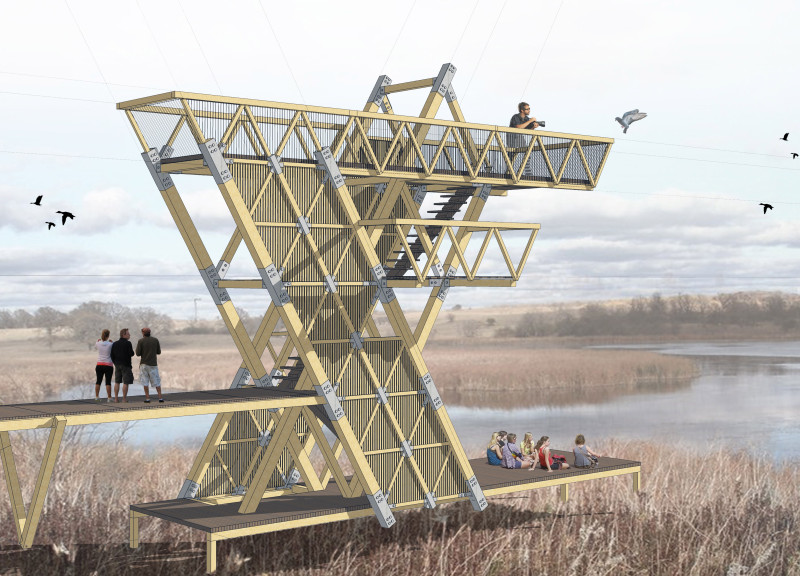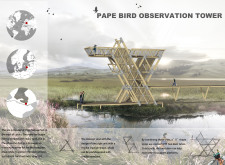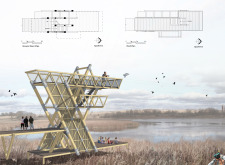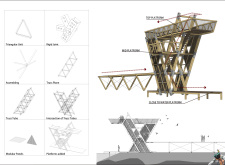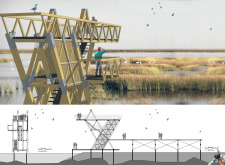5 key facts about this project
## Project Overview
The Pape Bird Observation Tower is situated within the Pape Nature Park in western Latvia, strategically positioned to enhance the birdwatching experience in a wetland ecosystem. Intended as an elevated platform for observing diverse bird species, the design prioritizes minimal environmental impact, employing innovative construction techniques to integrate with the natural surroundings.
## Structural and Material Strategy
The architectural framework employs a modular triangular unit system, constructed using prefabricated components that facilitate rapid assembly and reduce on-site disruption. The structure adopts an X-shape formed by two interconnected truss tubes, optimizing visual access while ensuring stability. Laminated timber (glulam) provides both strength and an organic aesthetic, harmonizing with the environment. Steel connections offer structural reinforcement, while wire mesh in guardrails maintains safety without obstructing views. The use of modular panels enhances flexibility during assembly and minimizes material waste.
## User Experience and Accessibility
Multiple observational platforms, including the Top Platform, Mid Platform, and Close to Water Platform, are designed for varying elevations, promoting diverse viewing experiences. Access routes, including stairs and ramps, ensure inclusivity for all visitors. The ground floor serves as an entry point, featuring amenities and educational displays about the local ecosystem. Elevated platforms provide expansive vistas, enhancing the overall birdwatching opportunities and fostering engagement with the surrounding landscape.
The design prioritizes transparency and visual connection, creating an immersive experience that encourages visitors to appreciate the natural habitat while supporting local biodiversity through environmentally sensitive construction practices.


